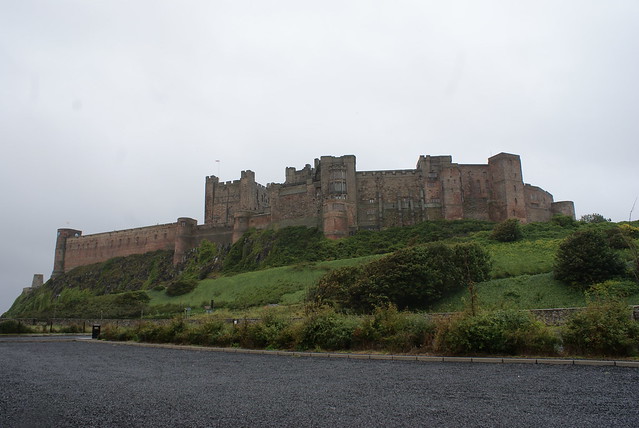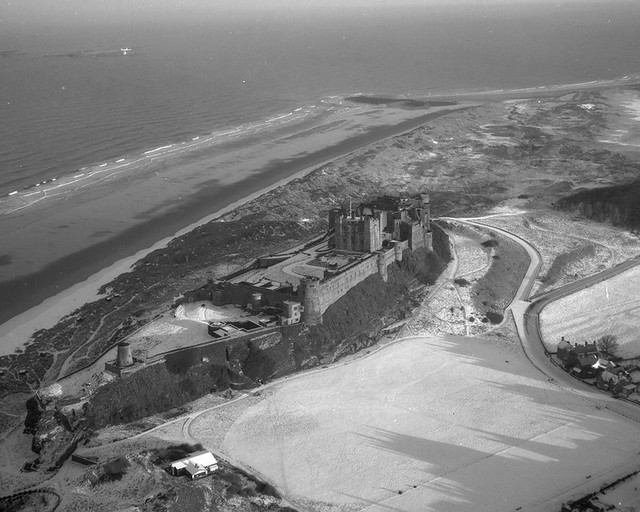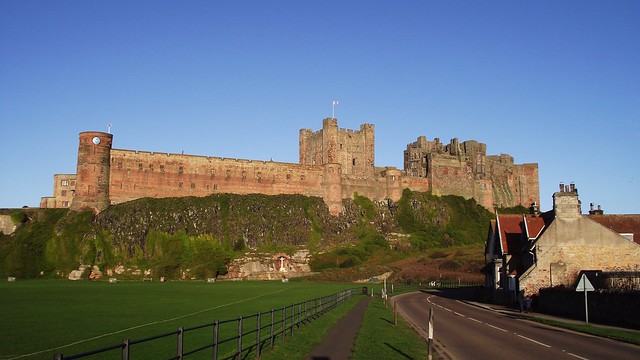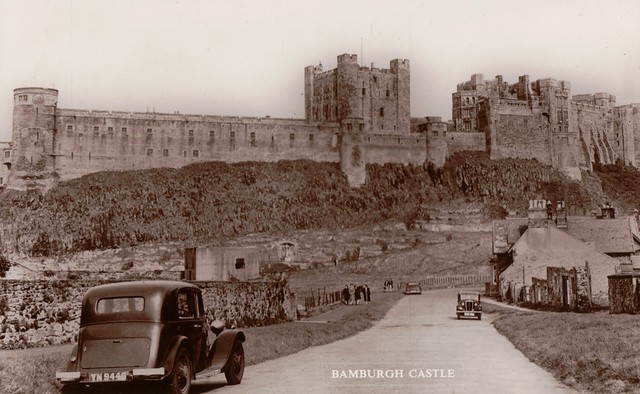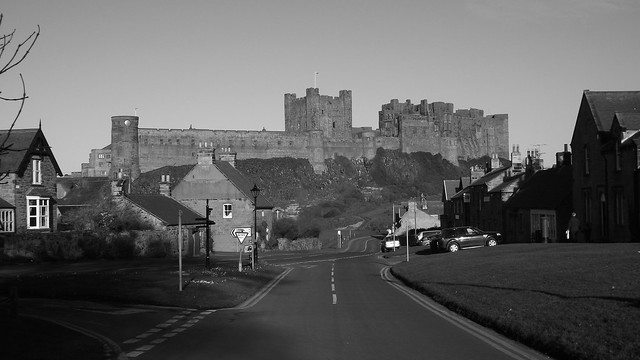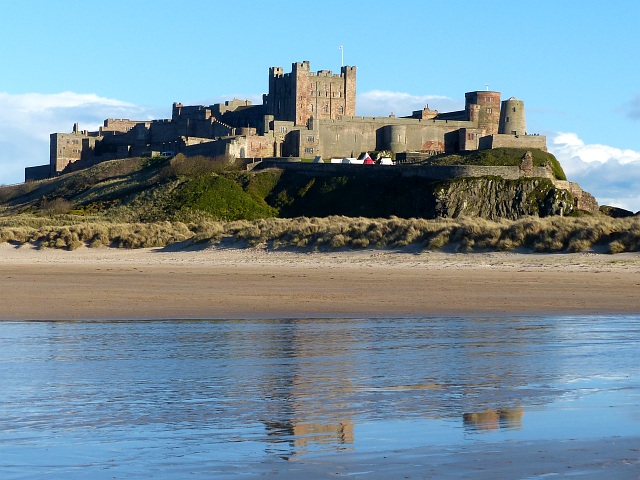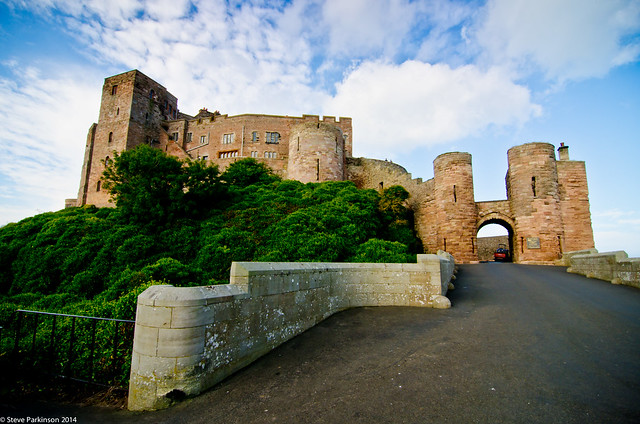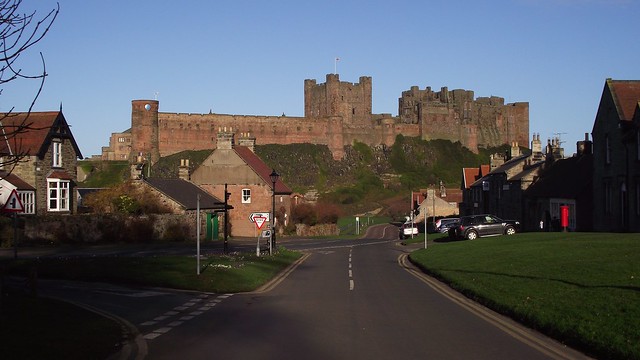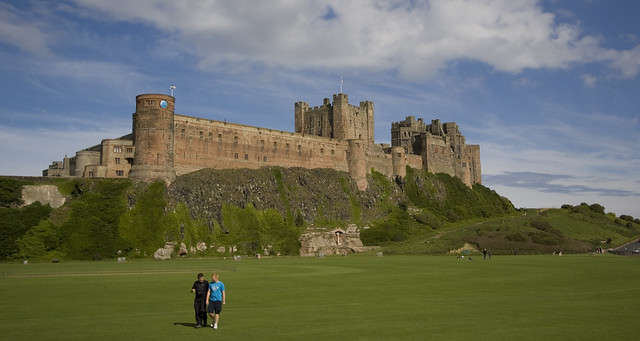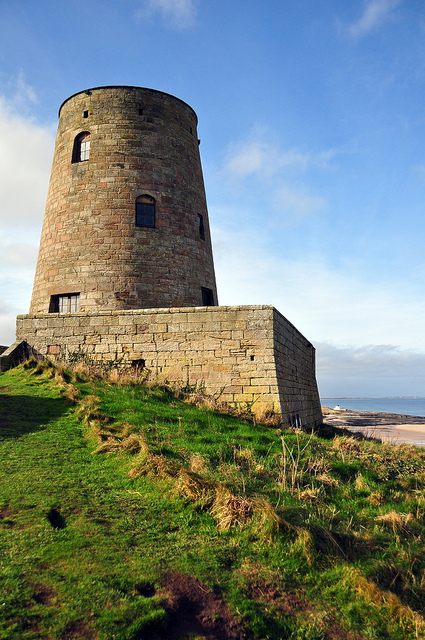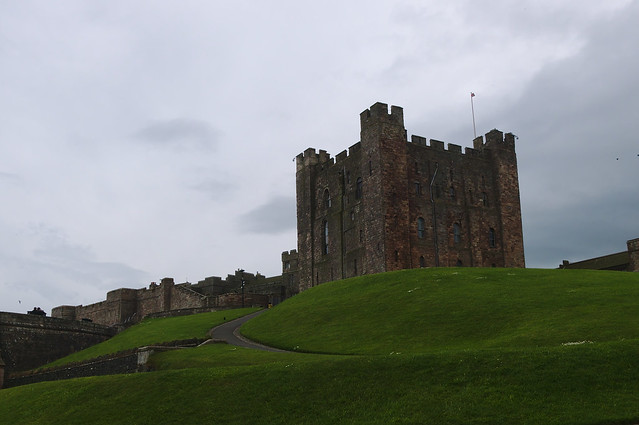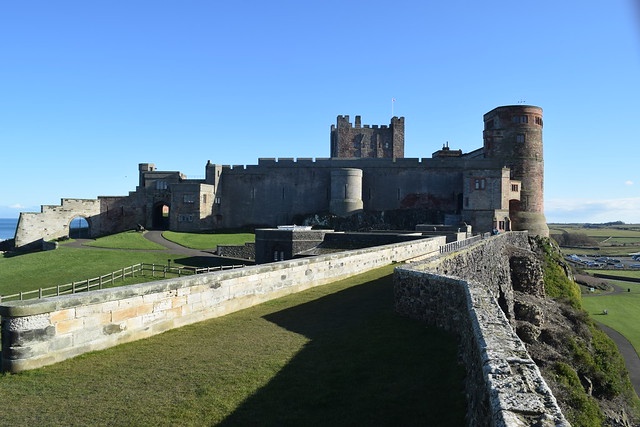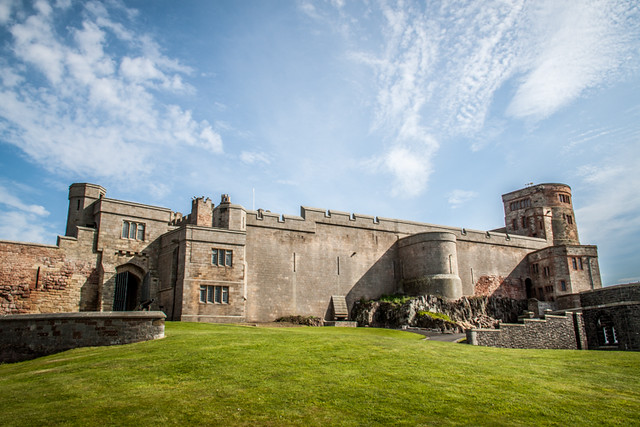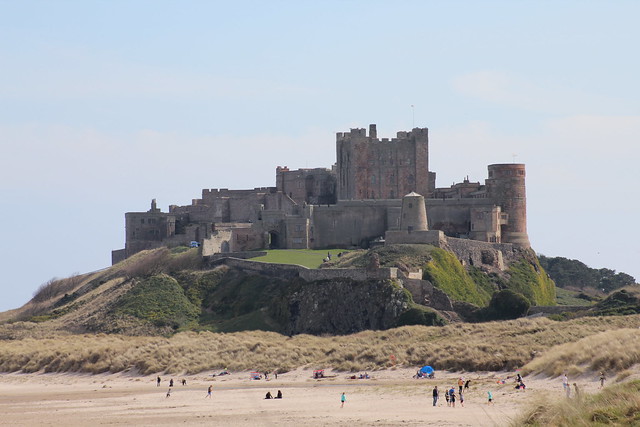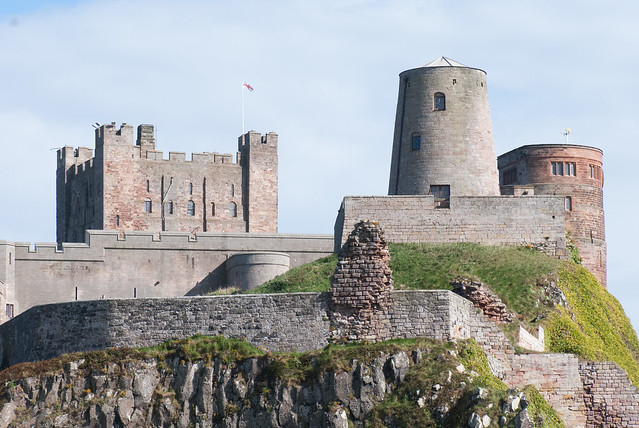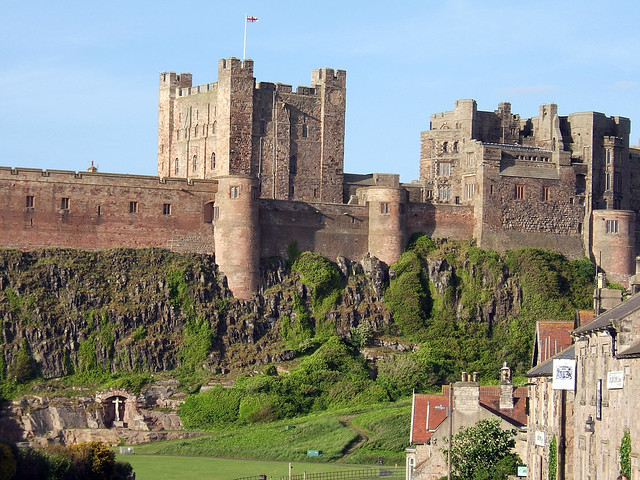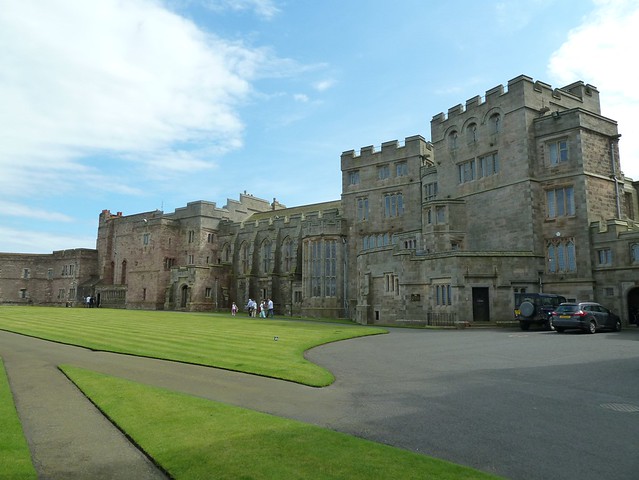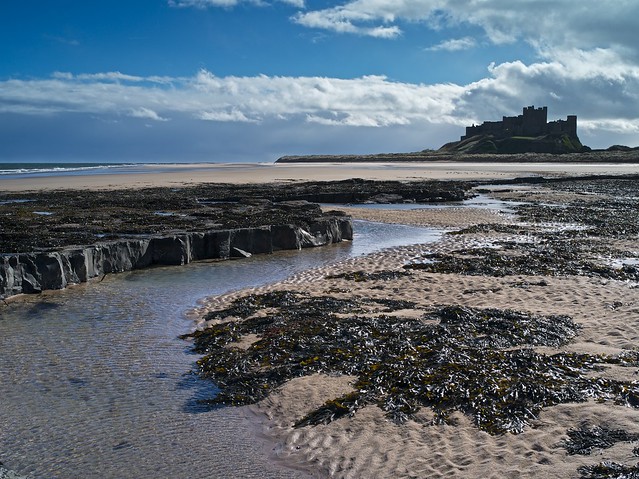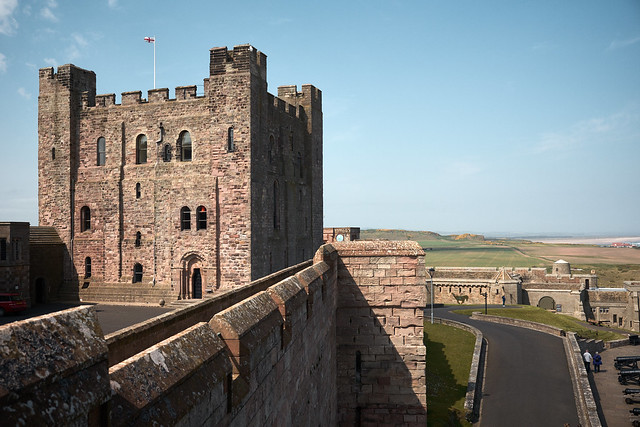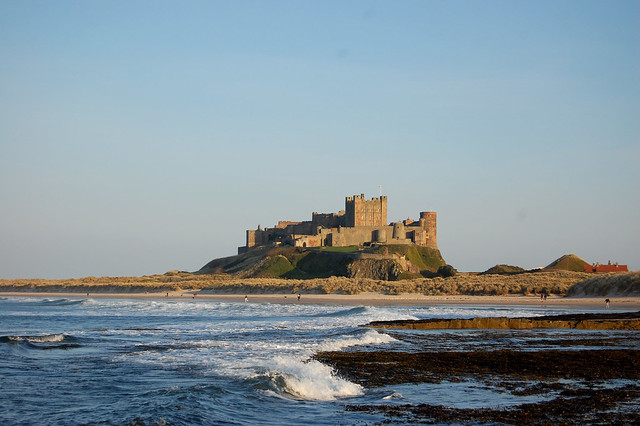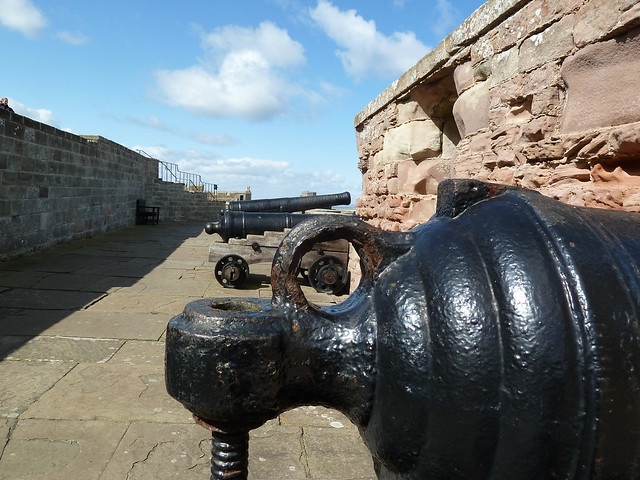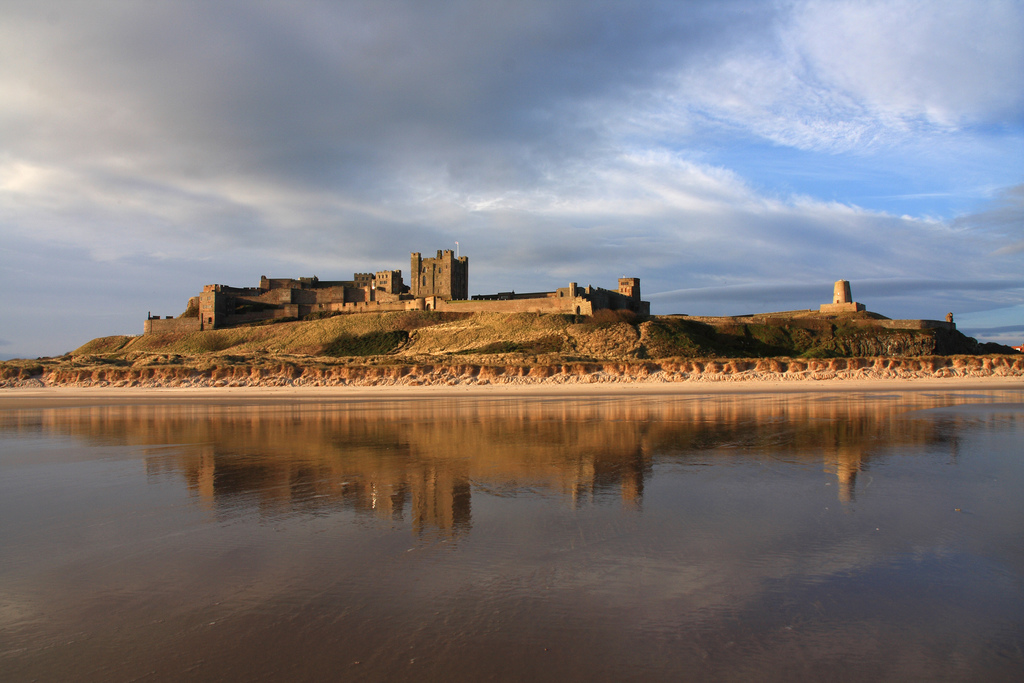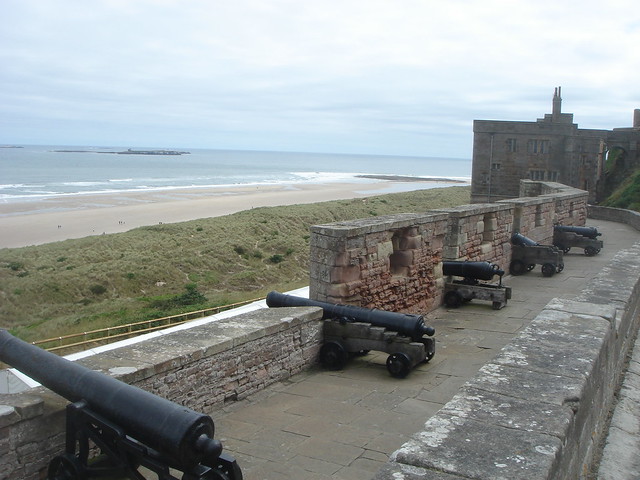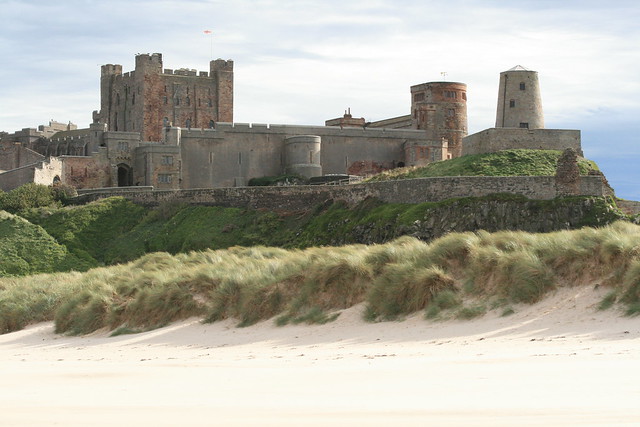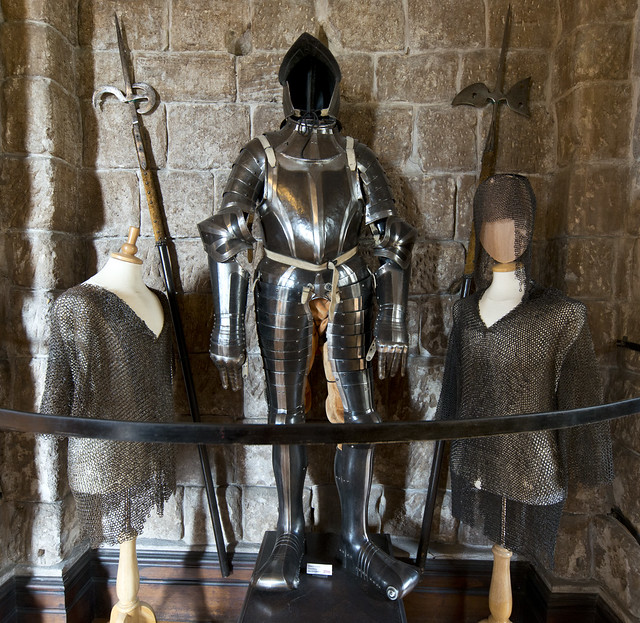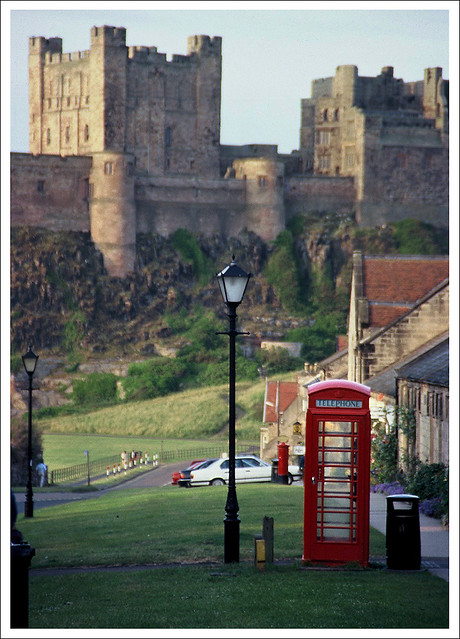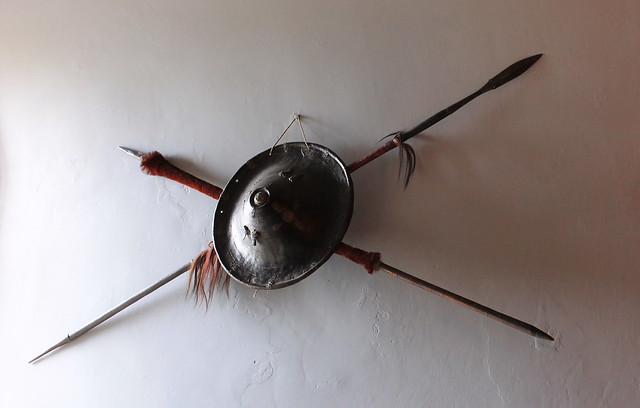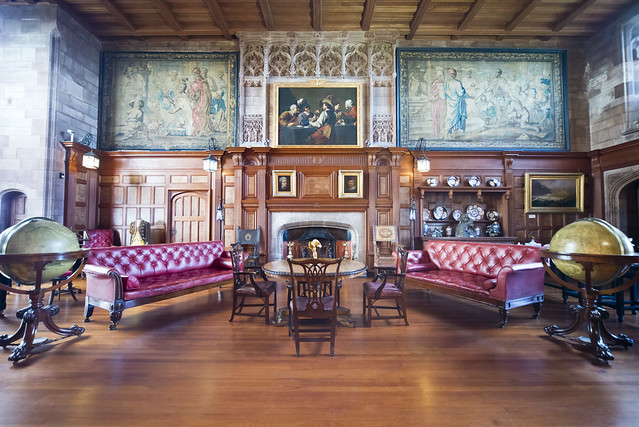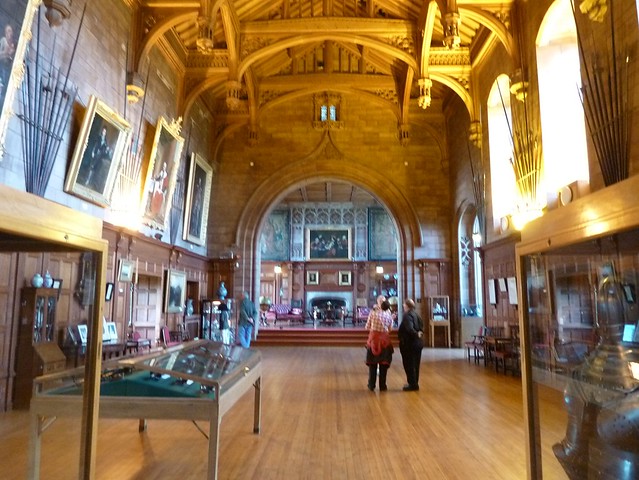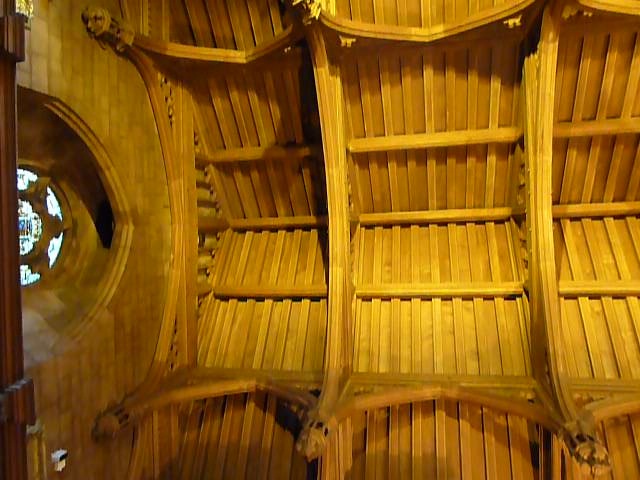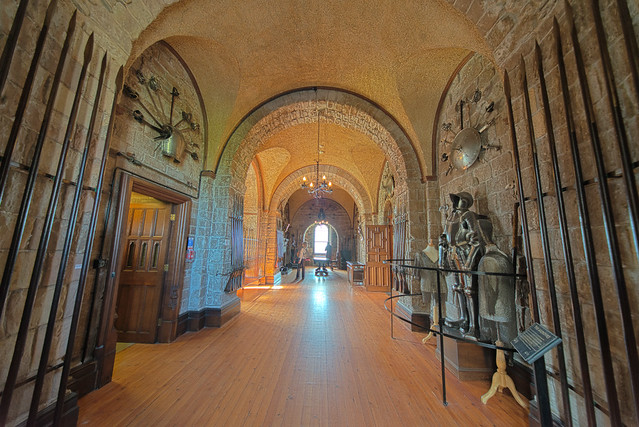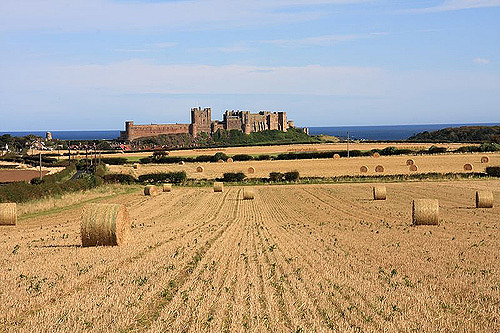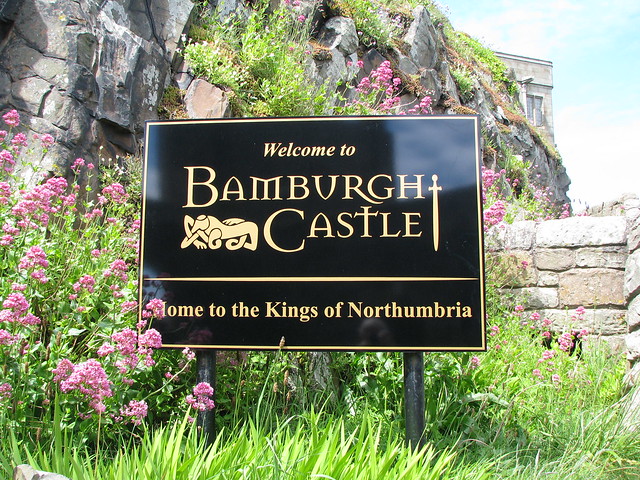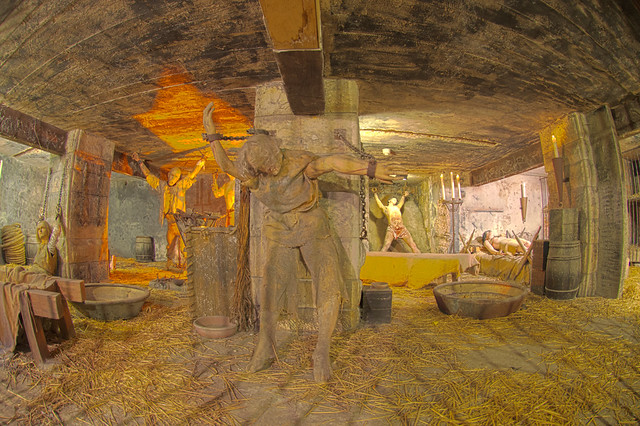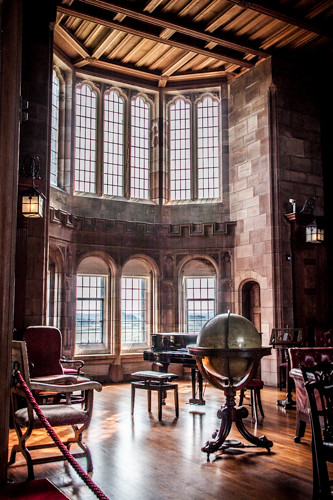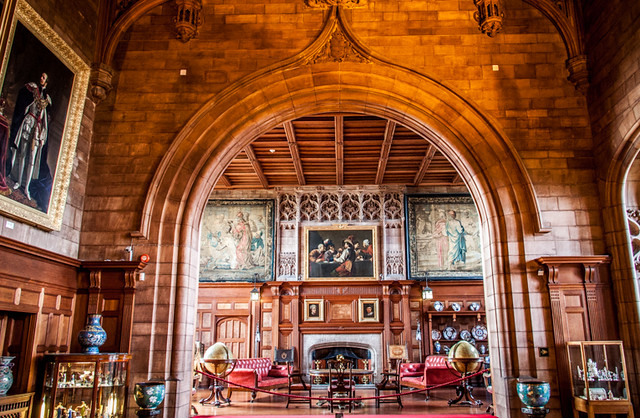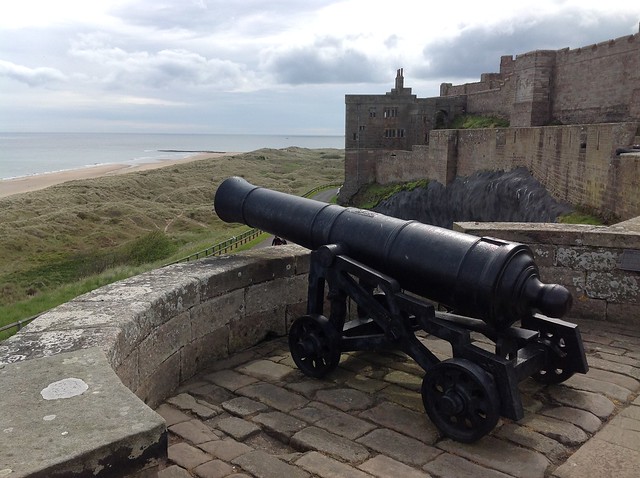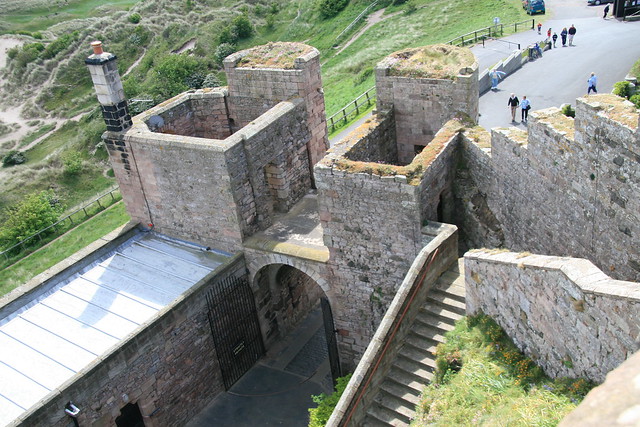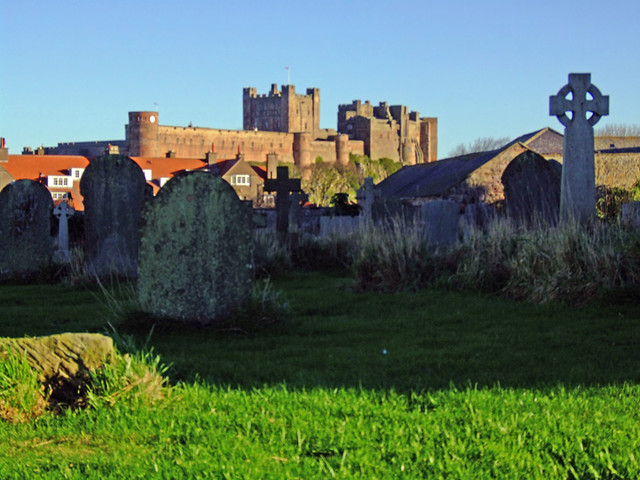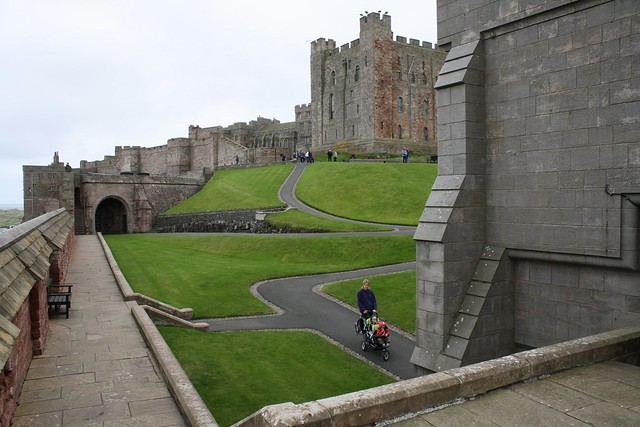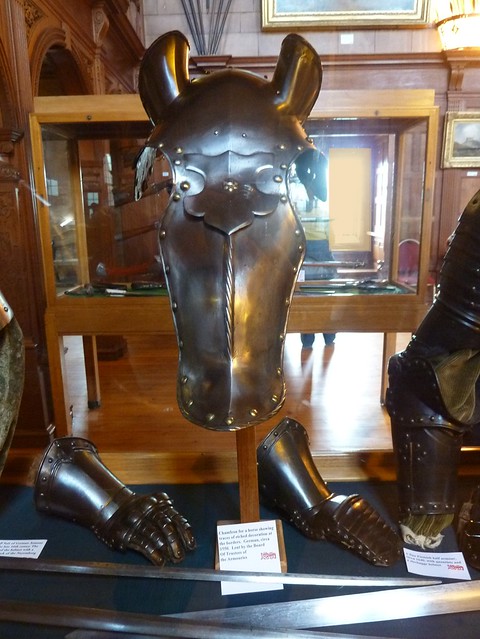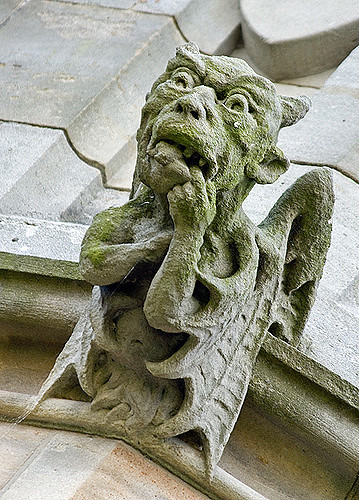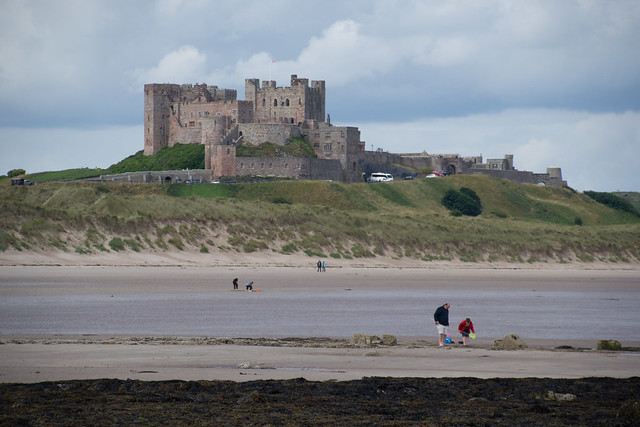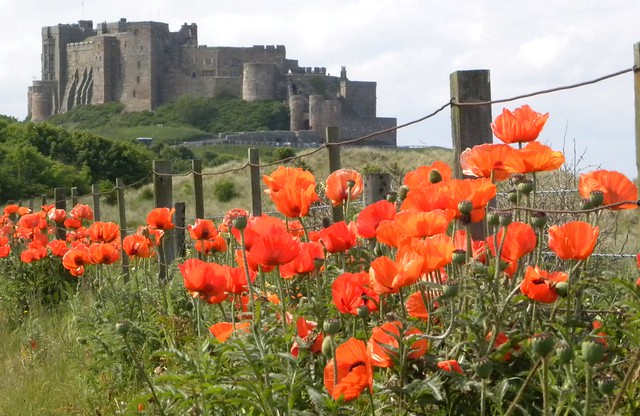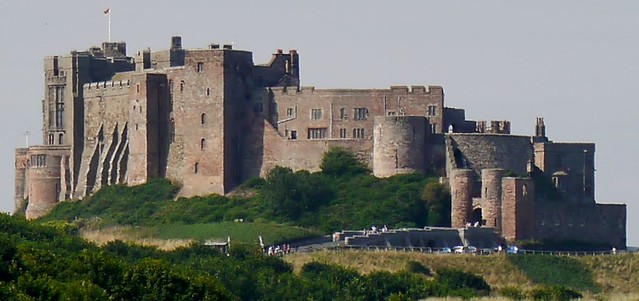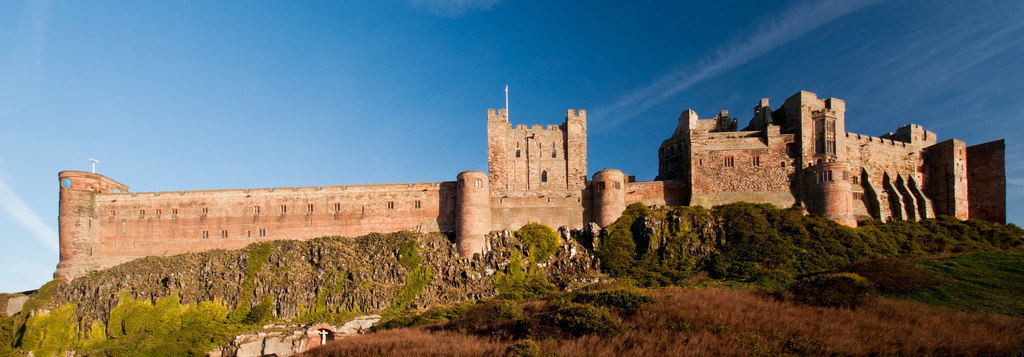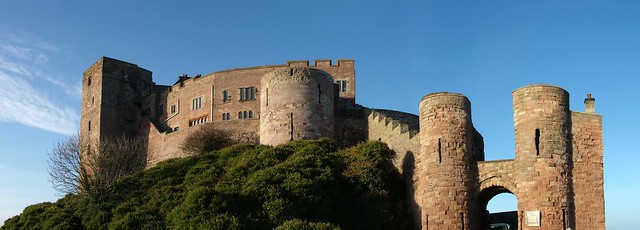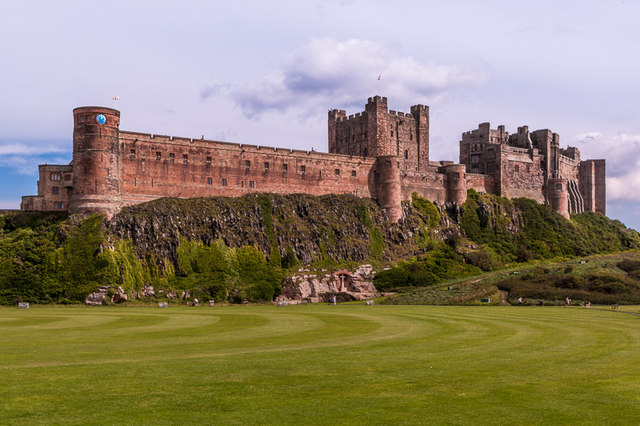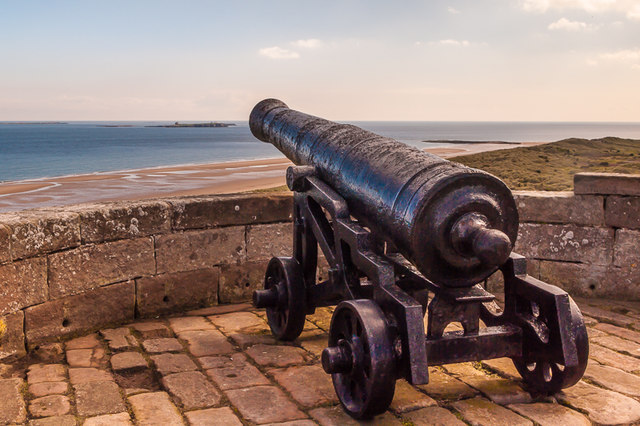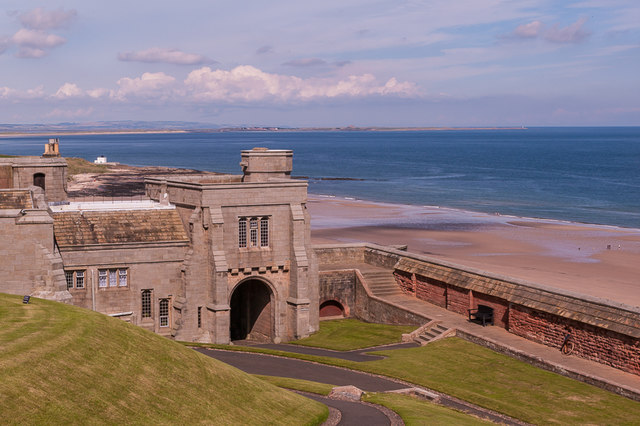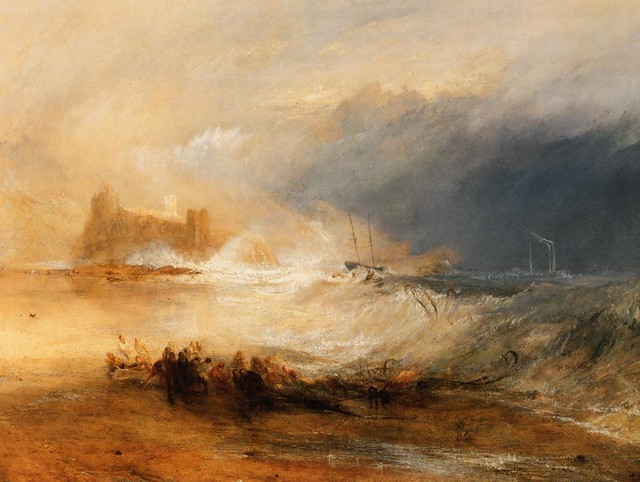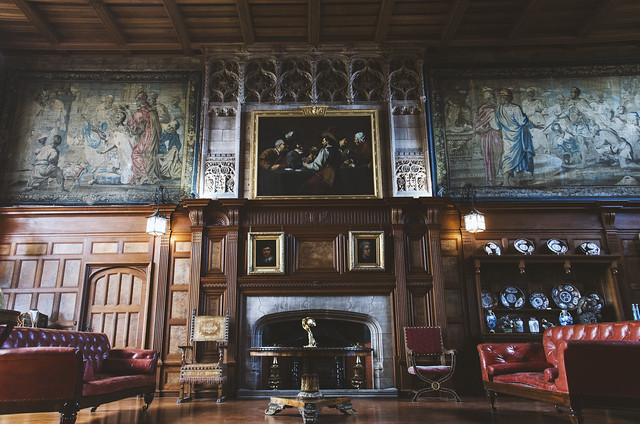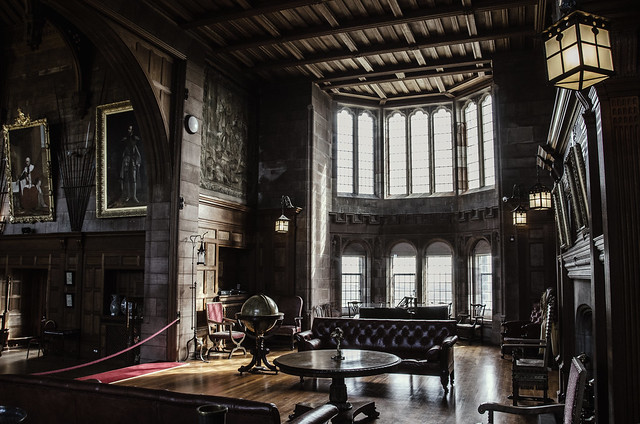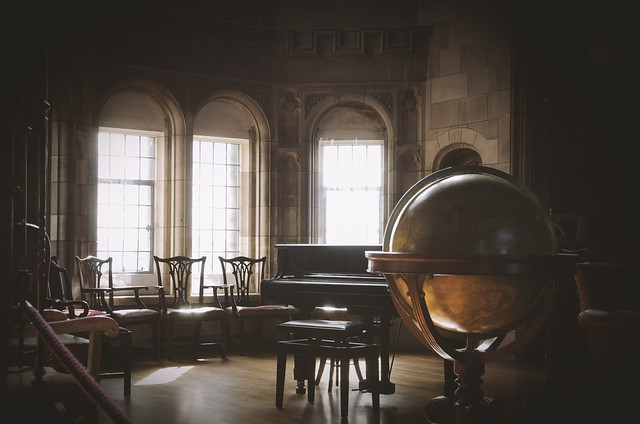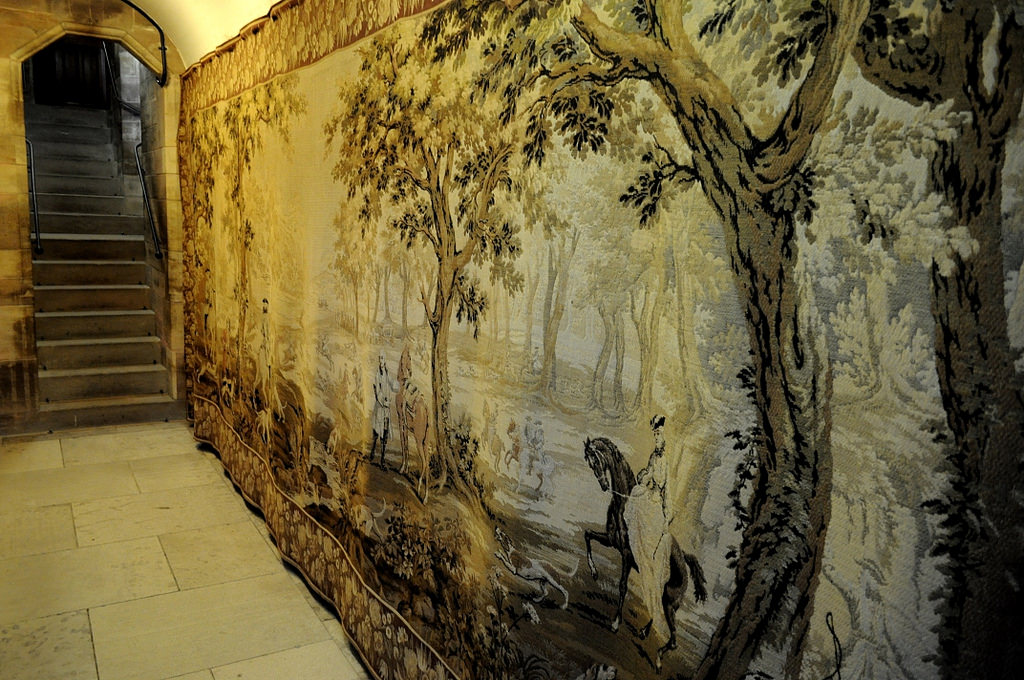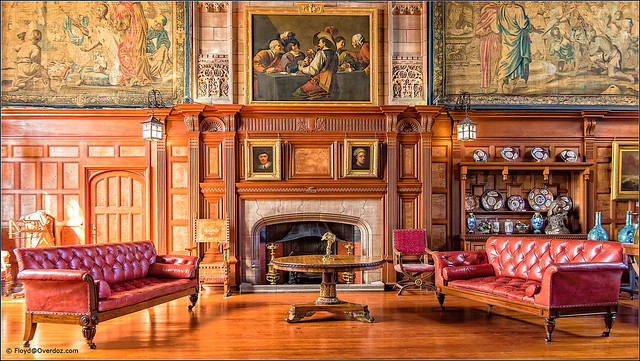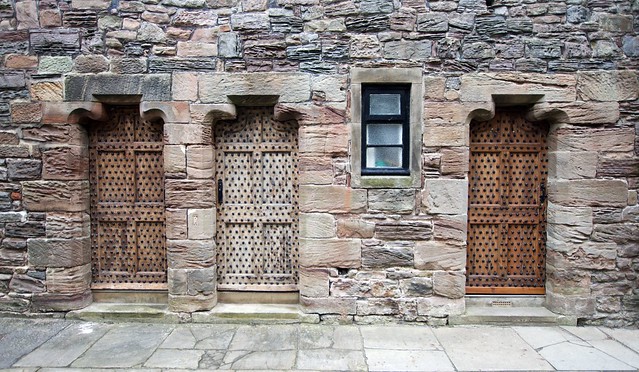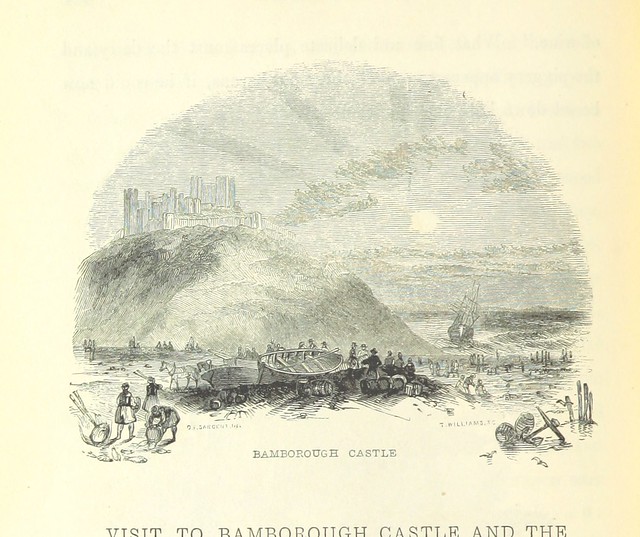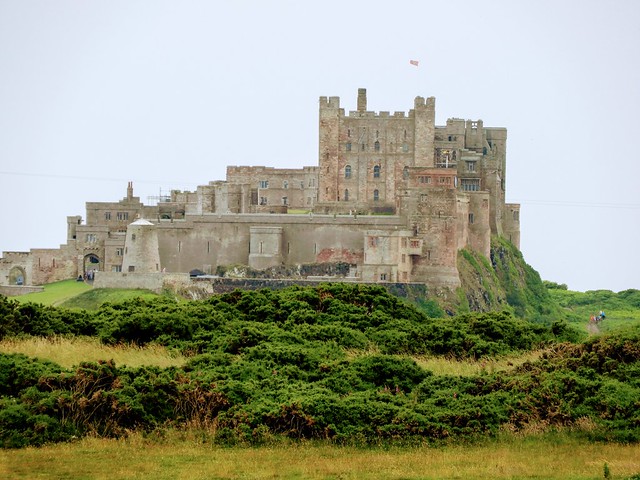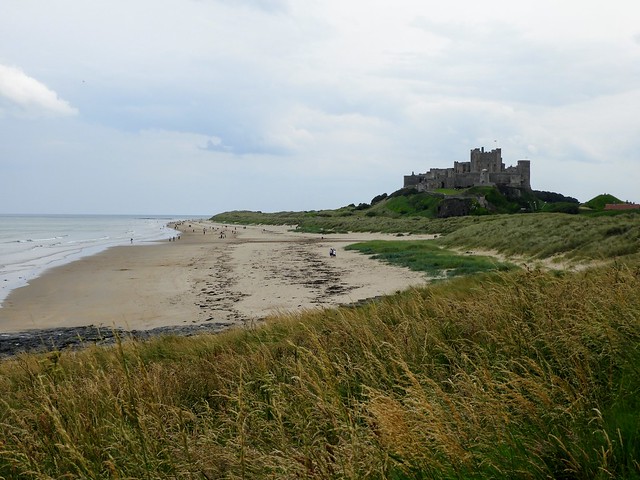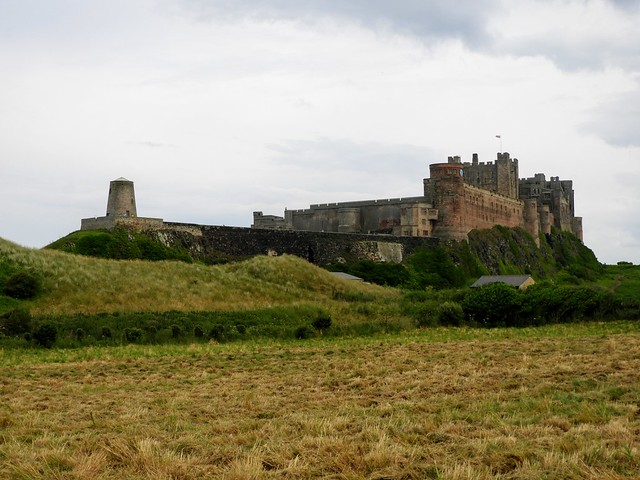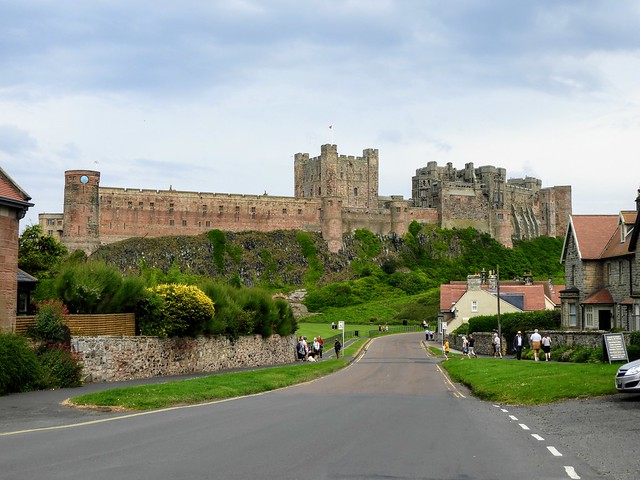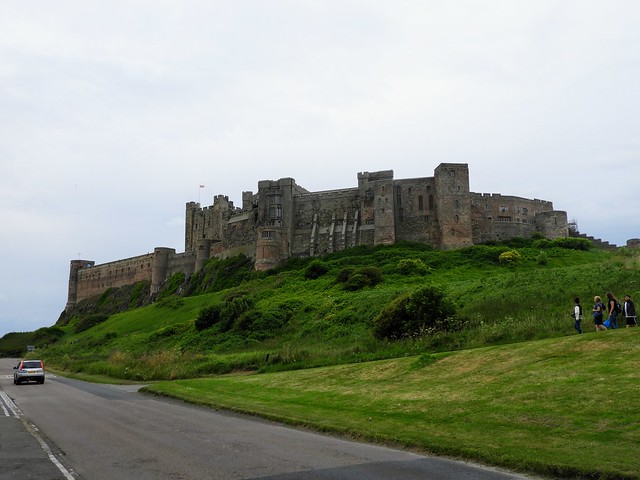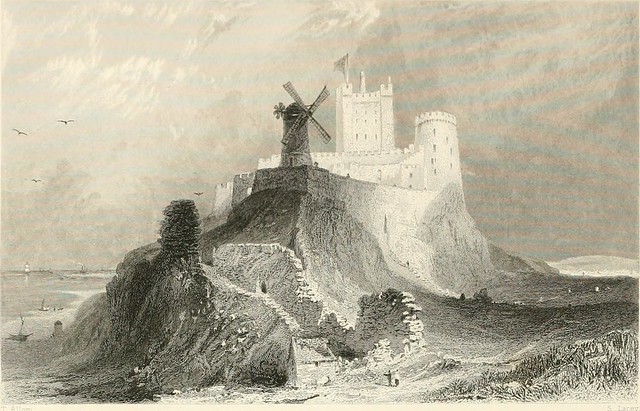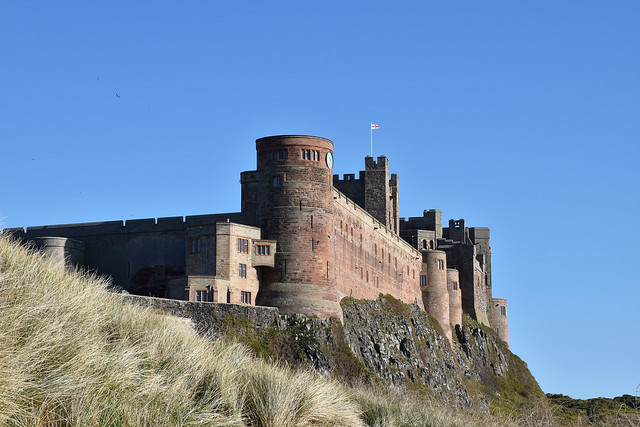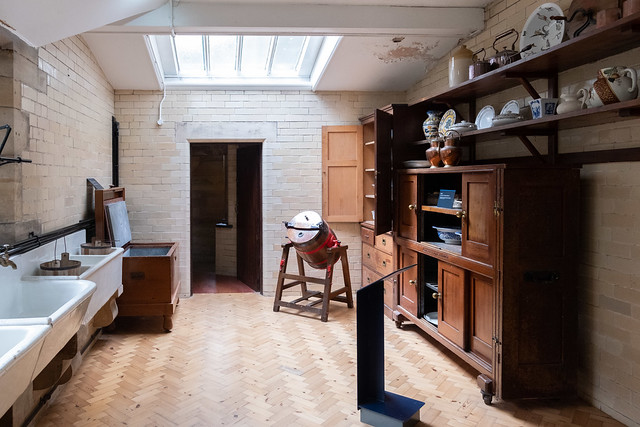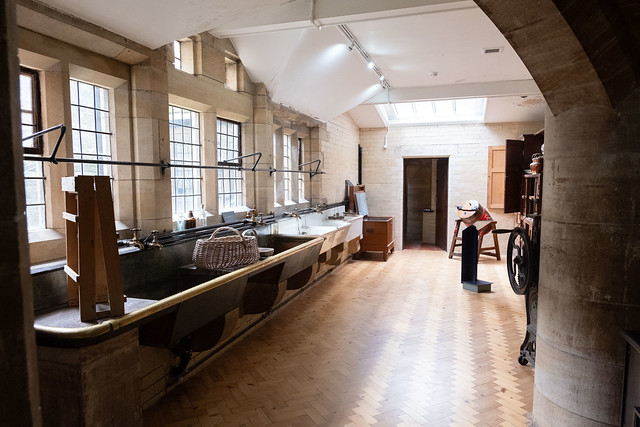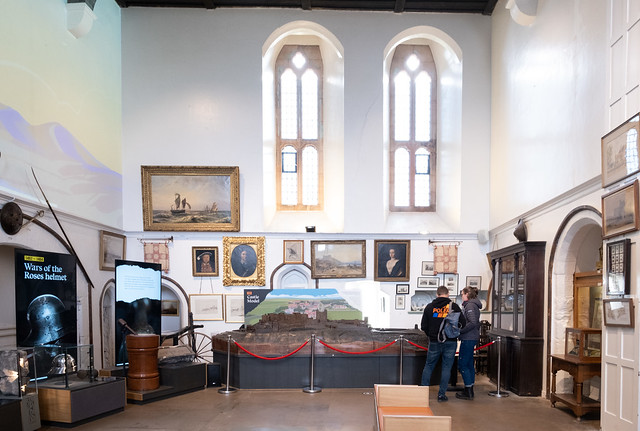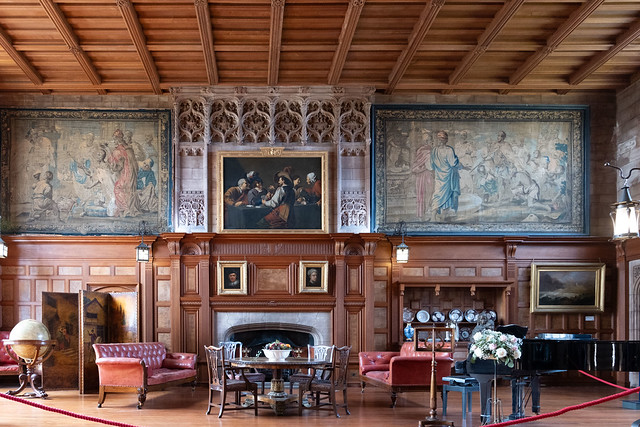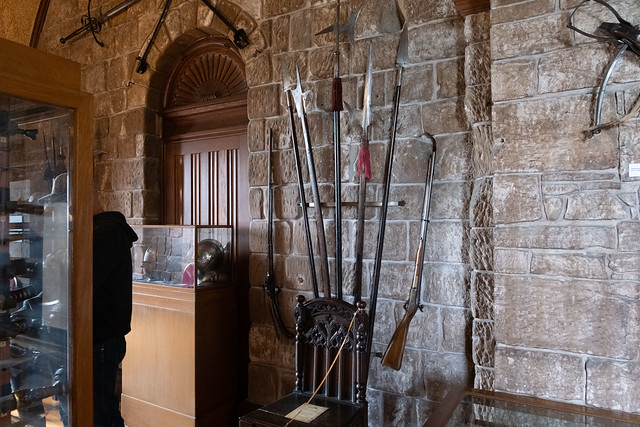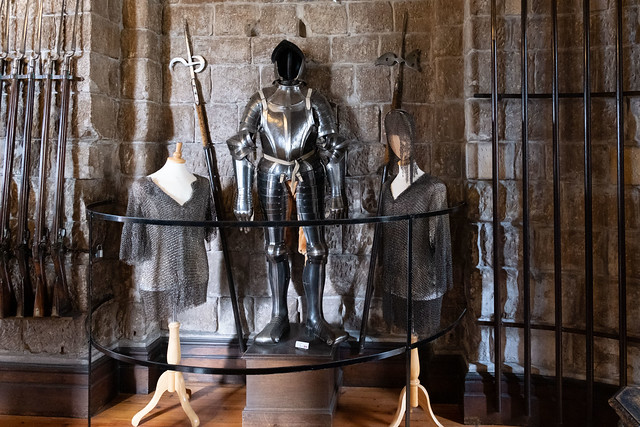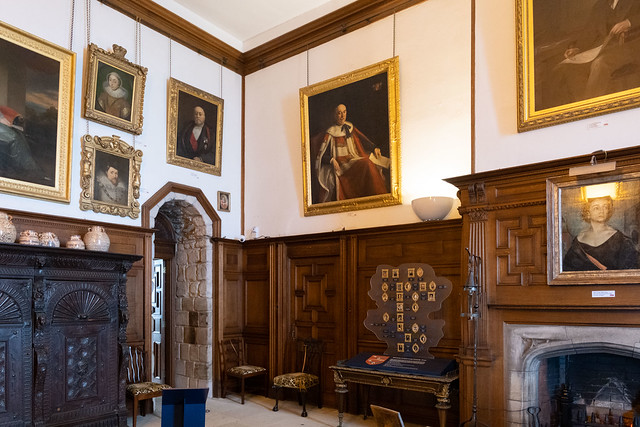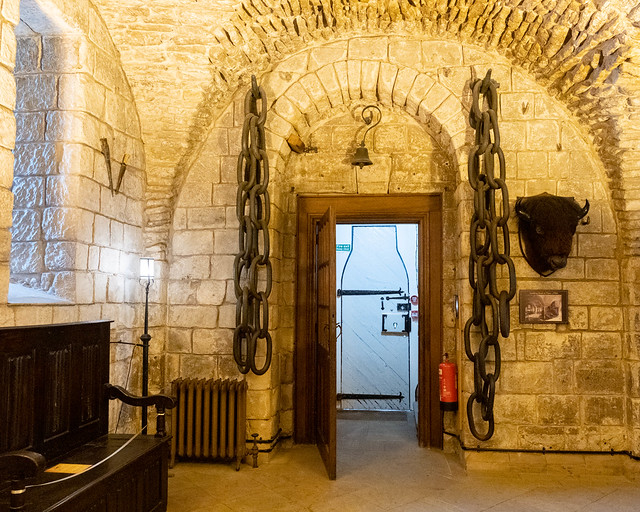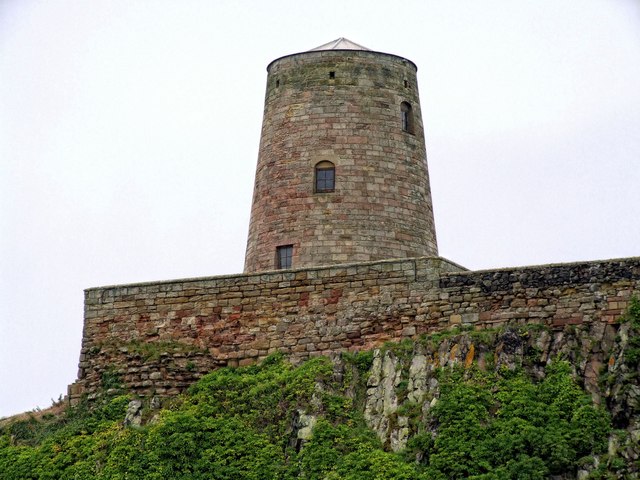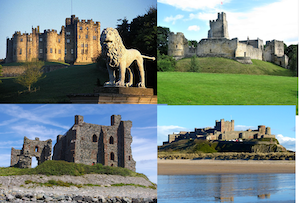Topics > Northumberland > Bamburgh > Bamburgh Castle
Bamburgh Castle
Bamburgh Castle is a castle on the northeast coast of England, by the village of Bamburgh in Northumberland. It is Grade I listed on the National Heritage List for England.
The site was originally the location of a Celtic Brittonic fort known as Din Guarie and may have been the capital of the kingdom of Bernicia from its foundation in 420 to 547. After passing between the Britons and the Anglo-Saxons three times, the fort came under Anglo-Saxon control in 590. The fort was destroyed by Vikings in 993, and the Normans later built a new castle on the site, which forms the core of the present one. After a revolt in 1095 supported by the castle's owner, it became the property of the English monarch.
In the 17th century, financial difficulties led to the castle deteriorating, but it was restored by various owners during the 18th and 19th centuries. It was finally bought by the Victorian era industrialist William Armstrong, who completed its restoration. The castle still belongs to the Armstrong family and is open to the public.
History
Built on a dolerite outcrop, the location was previously home to a fort of the indigenous Celtic Britons known as Din Guarie and may have been the capital of the kingdom of the region, Bernicia (see Gododdin, Bryneich and Hen Ogledd), from the realm's foundation in c. 420 until 547, the year of the first written reference to the castle. In that year the citadel was captured by the Anglo-Saxon ruler Ida of Bernicia (Beornice) and became Ida's seat. It was briefly retaken by the Britons from his son Hussa during the war of 590 before being relieved later the same year.
Hussa's grandson Æðelfriþ passed it on to his wife Bebba, from whom the early name Bebbanburgh was derived. The Vikings destroyed the original fortification in 993.
The Normans built a new castle on the site, which forms the core of the present one. William II unsuccessfully besieged it in 1095 during a revolt supported by its owner, Robert de Mowbray, Earl of Northumbria. After Robert was captured, his wife continued the defence until coerced to surrender by the king's threat to blind her husband.
Bamburgh then became the property of the reigning English monarch. Henry II probably built the keep. As an important English outpost, the castle was the target of occasional raids from Scotland. During the civil wars at the end of King John's reign, it was under the control of Philip of Oldcoates. In 1464 during the Wars of the Roses, it became the first castle in England to be defeated by artillery, at the end of a nine-month siege by Richard Neville, 16th Earl of Warwick.
The Forster family of Northumberland provided the Crown with twelve successive governors of the castle for some 400 years until the Crown granted ownership to Sir John Forster. The family retained ownership until Sir William Forster (d. 1700) was posthumously declared bankrupt, and his estates, including the castle, were sold to Lord Crew, Bishop of Durham (husband of his sister Dorothy) under an Act of Parliament to settle the debts.
The castle deteriorated but was restored by various owners during the 18th and 19th centuries. It was finally bought by the Victorian industrialist William Armstrong, who completed the restoration.
In 1944, during the Second World War, the Royal Navy corvette HMS Bamborough Castle was named after it.
The castle still belongs to the Armstrong family, and is opened to the public. It also hosts weddings and corporate events. It has been used as a film location since the 1920s, featuring in films such as Ivanhoe (1982), El Cid (1961), Mary, Queen of Scots (1971), Elizabeth (1998) and both the 1971 and 2015 adaptions of Macbeth.
Vicinity features
About to the south on a point of coastal land is the ancient fortress of Dunstanburgh Castle and about to the north is Lindisfarne Castle on Holy Island. Inland about 16 miles (26 km) to the south is Alnwick Castle, the home of the Duke of Northumberland.
Environmental factors
Air quality levels at Bamburgh Castle are excellent due to the absence of industrial sources in the region. Sound levels near the north-south road passing by Bamburgh Castle are in the range of 59 to 63 dBA in the daytime (Northumberland Sound Mapping Study, Northumberland, England, June 2003). Nearby are breeding colonies of Arctic and common terns on the inner Farne Islands, and of Atlantic puffin, shag and razorbill on Staple Island.
Archaeology at Bamburgh
Since 1996, the Bamburgh Research Project has been investigating the archaeology and history of the Castle and Bamburgh area. The project has concentrated on the fortress site and the early medieval burial ground at the Bowl Hole, to the south of the castle.
Archaeological excavations were started in the 1960s by Dr. Brian Hope-Taylor, who discovered the gold plaque known as the Bamburgh Beast as well as the Bamburgh Sword.
The project runs a training dig for eight weeks every summer for students to learn more about archaeological techniques and to further research into the Castle.
Armstrong and Aviation Artefacts Museum
The castle's laundry rooms feature the Armstrong and Aviation Artefacts Museum, with exhibits about Victorian industrialist William Armstrong and Armstrong Whitworth, the manufacturing company he founded. Displays include engines, artillery and weaponry, and aviation artefacts from two world wars.
In film, television and books
Late medieval British author Thomas Malory identified Bamburgh Castle with Joyous Gard, the mythical castle home of Sir Launcelot in Arthurian legend.
In literature, Bamburgh, under its Saxon name Bebbanburg, is the home of Uhtred, the main character in Bernard Cornwell's The Saxon Stories. It features either as a significant location or as the inspiration for the protagonist in all books in the series, starting with The Last Kingdom, and the sequels The Pale Horseman, The Lords of the North, Sword Song, The Burning Land, Death of Kings, The Pagan Lord, The Empty Throne, Warriors of the Storm and The Flame Bearer.
Bamburgh Castle is one of the locations featured in Matthew Harffy's The Serpent Sword, which takes place in the 7th century.
It also features in the book Ragnarok by Anne Thackery, and is the home of the main character and heroine, wife of the ruler of Din Guardi. In the book it is referred to as Din Guardi and then is renamed after the heroine's daughter in-law Bebba, as Bebbanburgh.
In addition to appearances as itself, Bamburgh Castle has been used as a filming location for a number of television and film projects.
Selected literary and film appearances
Visit the page: Bamburgh Castle for references and further details. You can contribute to this article on Wikipedia.
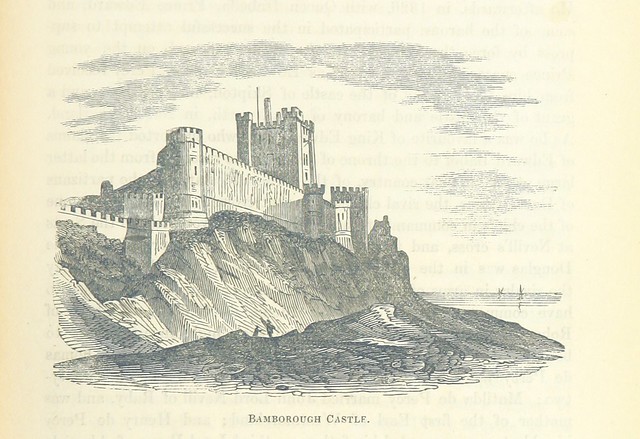
from Flickr (flickr)
Image taken from page 725 of 'The Local Historian's Table Book of remarkable occurrences, historical facts, traditions, legendary and descriptive ballads, connected with the Counties of Newcastle-upon-Tyne, Northumberland, and Durham. Historical Division.
Pinned by Simon Cotterill

from Flickr (flickr)
Image taken from page 402 of 'The Local Historian's Table Book of remarkable occurrences, historical facts, traditions, legendary and descriptive ballads, connected with the Counties of Newcastle-upon-Tyne, Northumberland, and Durham. Historical Division.
Pinned by Simon Cotterill
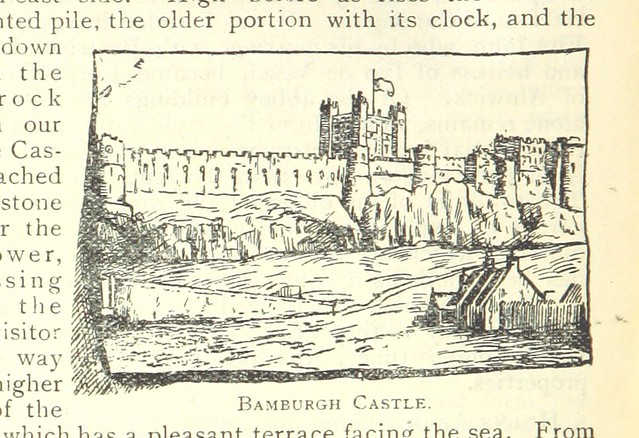
from Flickr (flickr)
Image taken from page 86 of 'The Illustrated Tourists' Guide to the scenery and places of interest ... served by the North Eastern Railway Company. By J. H. Morrison'
Pinned by Simon Cotterill

from Youtube (youtube)
Bamburgh Castle Northumberland : DJi Phantom Vision Plus 2 Drone
Pinned by Simon Cotterill

Co-Curate Page
Bamburgh Parish, 1855
- Extract from: History, Topography, and Directory of Northumberland...Whellan, William, & Co, 1855. BAMBROUGH PARISH BAMBROUGH is a parish, comprising two chapelries [Beadnell and Lucker] and twenty-two townships [Adderstone, Bambrough, …


from Flickr (flickr)
Image taken from page 725 of 'The Local Historian's Table Book of remarkable occurrences, historical facts, traditions, legendary and descriptive ballads, connected with the Counties of Newcastle-upon-Tyne, Northumberland, and Durham. Historical Division.
Pinned by Simon Cotterill

from Flickr (flickr)
Image taken from page 402 of 'The Local Historian's Table Book of remarkable occurrences, historical facts, traditions, legendary and descriptive ballads, connected with the Counties of Newcastle-upon-Tyne, Northumberland, and Durham. Historical Division.
Pinned by Simon Cotterill

from Flickr (flickr)
Image taken from page 86 of 'The Illustrated Tourists' Guide to the scenery and places of interest ... served by the North Eastern Railway Company. By J. H. Morrison'
Pinned by Simon Cotterill

from Youtube (youtube)
Bamburgh Castle Northumberland : DJi Phantom Vision Plus 2 Drone
Pinned by Simon Cotterill

Co-Curate Page
Bamburgh Parish, 1855
- Extract from: History, Topography, and Directory of Northumberland...Whellan, William, & Co, 1855. BAMBROUGH PARISH BAMBROUGH is a parish, comprising two chapelries [Beadnell and Lucker] and twenty-two townships [Adderstone, Bambrough, …
List number: 1280155
Post code: NE69 7DF
County: Northumberland
Grid ref: NU1837335053

